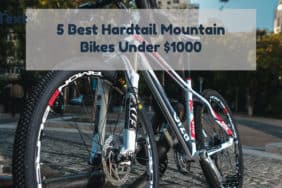Been riding a while and you’re ready to up your game? We find most riders in this price range are shopping for their second or perhaps third mountain bike. Congrats, that must mean your technical riding skills are getting really good!
You’ll find the $3000 mark is what I’d call the gateway to really good bikes. This is the starting price where upgrading to one of these bikes you’ll probably notice immediately you’re faster, more capable, or just go quicker and farther than your buddies.
Today we’re going to be looking at the best mountain bikes under $3000. In this price range, you can find great factory bikes without having to get into customization and mixing and matching components. Sure, you could drop even more for a custom build, but we believe that the bikes we’re going to show you today are perfect for most riders.
This price range gets us into two primary types of bikes you can buy, a hardtail or a full-suspension. We’ll be talking about both of them.
Strap in and let’s go!
Table of Contents
Our Favorite Full Suspension Mountain Bike Under $3000
How to Choose a Cross-Country Mountain Bike
Frame
For rough and tumble mountain biking, a sturdy, well-built frame is going to be your best bet because you are taking on rough terrain. However, when riding cross-country, you don’t want to be working with a massive mountain bike. Instead, you want something durable yet lightweight.
Compared to other kinds of mountain bikes, XC models are the lightest of the bunch. In fact, if you carried them side by side, you would be amazed by how well you can lift the XC.
To keep the frame as light as possible without making it too weak, there are a few different options from which to choose. Let’s break them down.
Aluminum
Overall, you’re going to get a lot of mileage out of an aluminum frame. This material is robust yet much lighter than steel, making it an ideal choice for many bikers. Also, price-wise, you can save a lot of money this way. Aluminum is still one of the cheapest metals around (thanks to its endless recyclability), so you can stay well under $3000 while getting a high-quality ride.
Carbon Fiber
If you want something a bit stronger than aluminum but still just as lightweight, then carbon fiber is incredible. Many pro bikers like this material a lot because it can take more abuse without denting or getting beat up. Even though cross-country riding isn’t as intense as other forms of mountain biking, it helps to have some extra durability. Nonetheless, this is a more expensive option, so keep that in mind.
Alloy
Metal alloys can provide the best of both worlds, offering durability and less weight compared to straight steel. While alloy frames are not as light as carbon fiber or aluminum, they can last a bit longer overall. Another thing to consider is that they are not as popular as other materials, so they can be harder to find.
Weight
As we’ve mentioned, cross-country riding can be influenced heavily by how much your bike weighs. Because you’re accelerating a lot (both up and down hills), and you’re covering so many miles, you need a ride that won’t slow you down.
Most XC bikes are already light, but if you’re serious about getting better, you want to go as lean as possible. For the most part, these models are going to be around 25 pounds, but you want to aim for that target or below if possible.
Some things that can affect weight include:
- Frame materials
- Suspension type (full is heavier than hardtail)
- Tires
Overall, you will want to shave as many ounces off of your bike as you can if you’re going to make your ride easier. Even a pound difference can help you retain more stamina in the long term, so don’t assume that a 24 lb and a 25 lb bike are “basically the same.”
Suspension – Hardtail vs. Full Suspension
Beyond the frame, the suspension is probably the most crucial to your needs. Although the terrain you’ll be experiencing shouldn’t be too rough, that doesn’t mean that you won’t encounter pockets of resistance that can create problems.
If you’re not familiar with these two types, here is a brief overview.
Hardtail: the suspension is only in the front, while the rear tire stays rigid
Full Suspension: you have a suspension fork on both ends, allowing you to move more smoothly over obstacles
Because having the extra fork can add weight to your bike, it’s essential to determine if it’s necessary. For our money, we believe that hardtails are the better option overall because it’s easier for you to adapt to the terrain than it is to the bike.
However, if you know that you’re going to be hitting some rough patches, or you are doing to be doing a lot of downhill riding (full suspension is best for that), then you may want the additional support.
Some downsides of full suspension include more maintenance, higher costs, and more work on flat surfaces and hills. If those sound like they could be issues for you, then go with a hardtail. You may get some bumps and bruises along the way, but it can make a lot more sense in the end.
Wheel Size
Finally, your wheels are going to add some substantial power and performance to your riding experience, so you want to choose carefully. There are three primary sizes to choose from, so let’s break them down.
26 inches: this size is slowly being phased out, but that doesn’t mean that it’s inferior. The smaller wheel means less weight, but you do get less traction than you would with something more substantial. Also, in a few years, you may not be able to find parts for these wheels, so keep that in mind.
27.5 inches: this is becoming the new standard, so you may be forced to buy a bike with these wheels. They are nimble and have good handling, so it’s not like you’re settling or anything.
29 inches: if you want as much traction as possible and you don’t care about agility or weight, then this can be a better option. However, for cross-country, you have to have a good reason to want wheels this large.
Best Full Suspension Mountain Bike Under 3000
This year we’ve found 5 full suspension mountain bikes we really like under $3000. With the supply chain being constrained during and post Covid, this was no easy task. Most retailers are having a hard time keeping bikes in this price range in stock. If you find one available, buy it immediately as they sell quickly. Here’s the complete list:
| Image | Product | Our Rating | Price |
|---|---|---|---|
Editors Choice 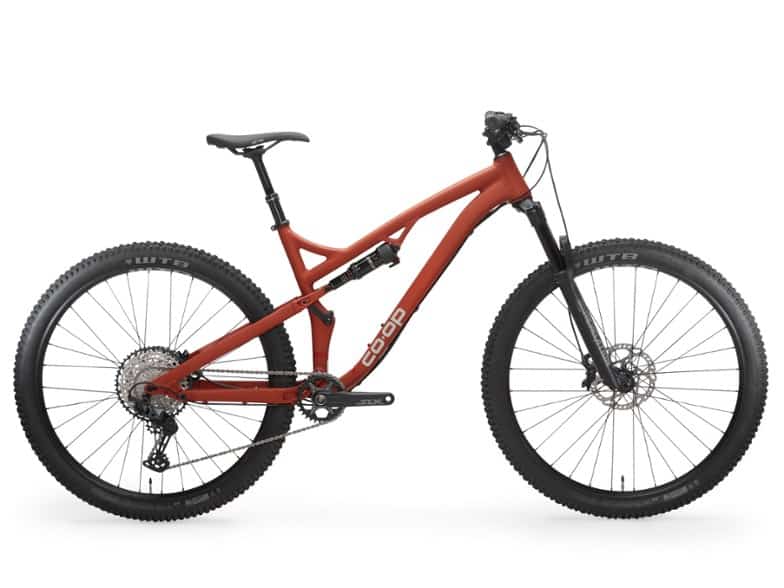 | CO-OP CYCLES DRT 3.3 | 9.7 | Check Price |
Best Value 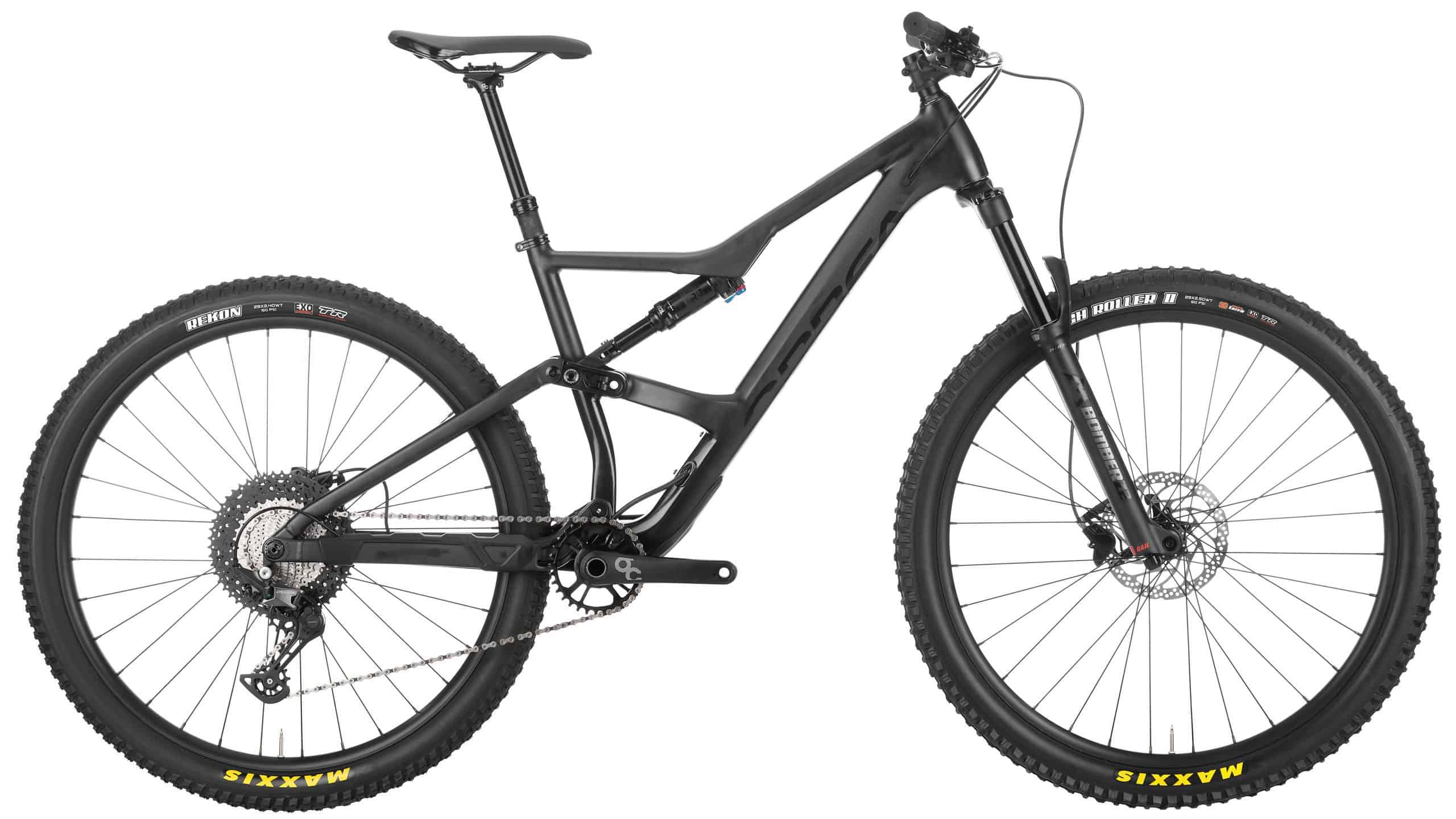 | Orbea OCCAM H30 BIKE 2021 | 9.5 | Check Price |
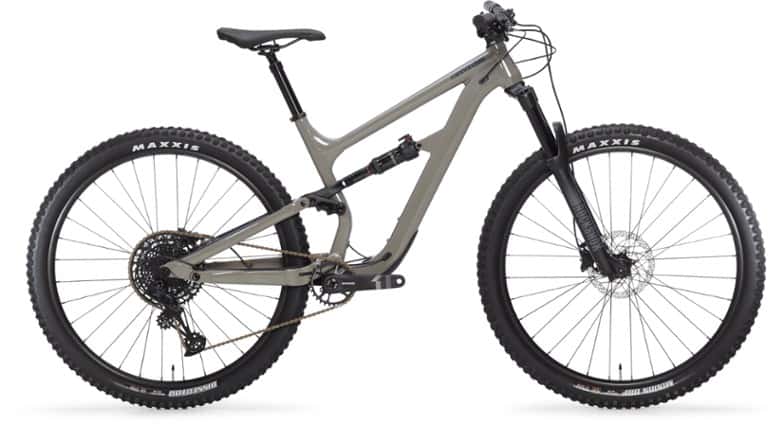 | Cannondale Habit 4 2021 | 9.1 | Check Price |
Low Price Favorite 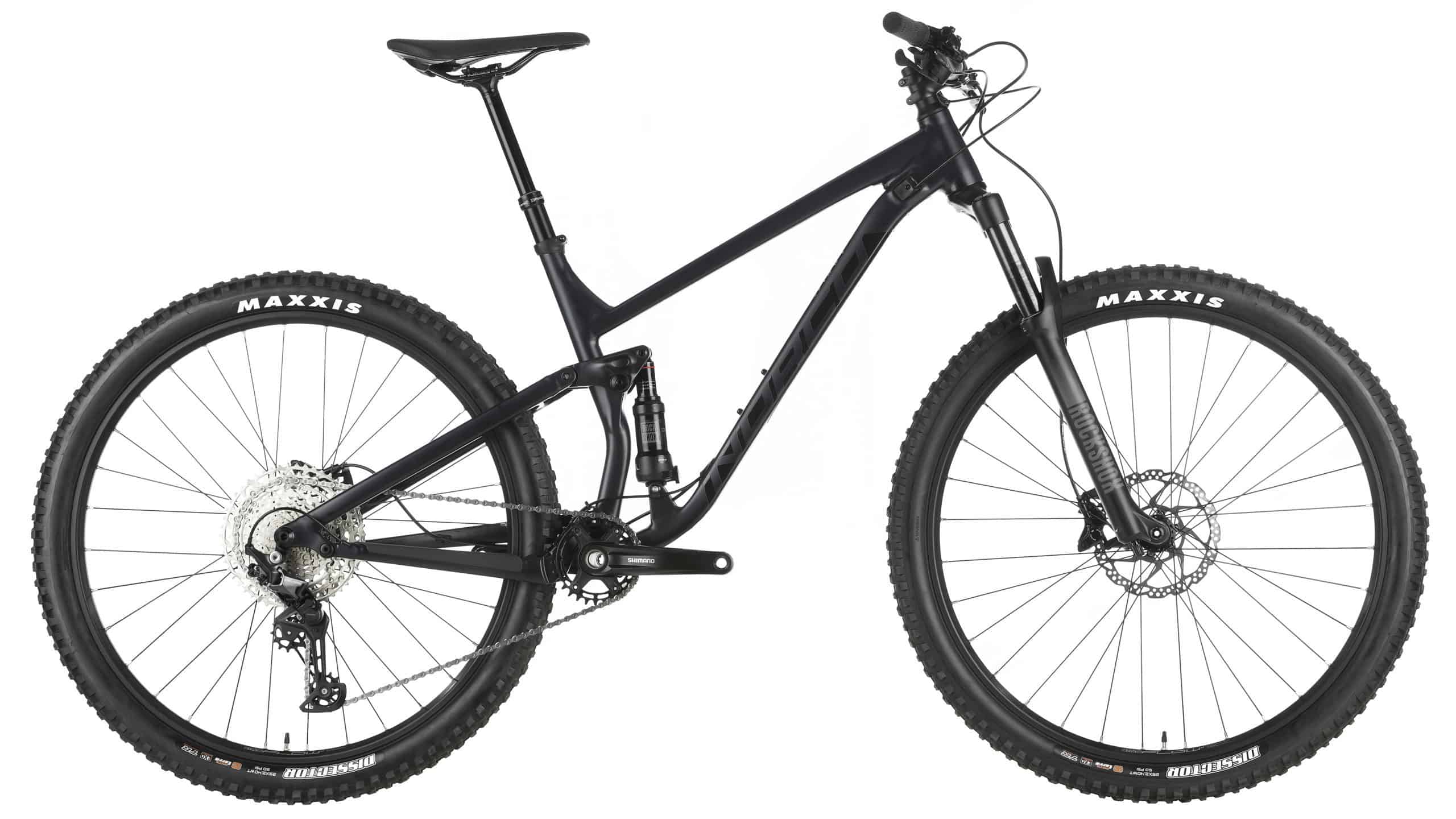 | Norco FLUID FS 2 | 8.8 | Check Price |
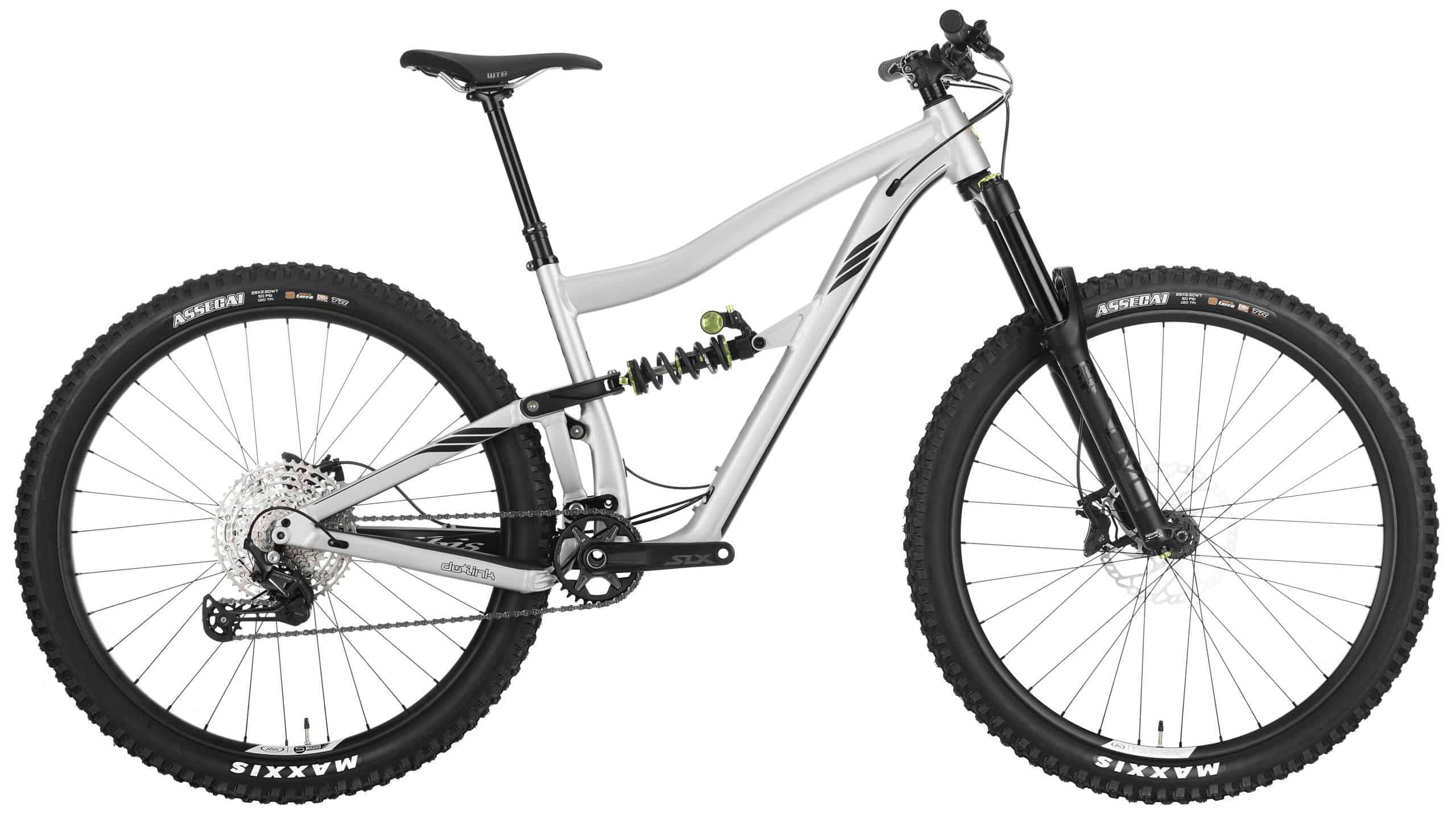 | Ibis RIPMO AF DEORE | 8.6 | Check Price |
Co-Op Cycles DRT 3.3 Mountain Bike
- Frame: Aluminum
- Wheel: 29″
- Fork: RockShox Revelation RC
- Fork Travel: XS = 120mm, M/L = 130mm
- Drivetrain: 1×12
- Sizes: XS, M, L
- Weight: 31.5 lbs
- Primary Use: Trail
The Co-Op Cycles DRT 3.3 Mountain Bike is this year’s Editors Choice Award Winner. It’s a tremendous value and built with components rivaling $4000 bikes. It’s slightly over our $3000 mark, but with around $300 in savings, brings it inline with our goals.
If you have an REI close to you, buy it online and have it shipped there for free (save $75-$100), and doing this will get you professional assembly and tuning ($155 savings), with an additional bike tune in 6 mos for free ($65 savings), in total, saving around $300.
Orbea Occam H30 Mountain Bike
- Frame: Aluminum
- Wheel: 29″
- Fork: Marzocchi Bomber Z2
- Fork Travel: 140mm
- Drivetrain: 1×12
- Sizes: S, M, L, XL
- Weight: not specified
- Primary Use: Trail, All-Mountain
The Orbea Occam H30 Mountain Bike is this years Best Value Award Winner. One of the most balanced trail bikes you can buy! In a nutshell, it’s just an amazing bike for the price. It’s my personal favorite on this list.
Cannondale Habit 4 Mountain Bike
- Frame: Aluminum
- Wheel: 29″
- Fork: RockShox 35 RL Gold
- Fork Travel: 140mm
- Drivetrain: 1×12
- Sizes: L
- Weight: 35.5 lbs
- Primary Use: Trail
The Cannondale Habit 4 Mountain Bike came in third this year. While it didn’t win any awards, it should be seriously considered by any rider out there. The 2020 version of this bike was discussed by hardcore MTB’ers to be in the top 3 of trail bikes, and this 2021 version is just as good.
Norco Fluid FS 2 Mountain Bike
- Frame:Aluminum
- Wheel: 29″
- Fork: RockShox 35 Silver R
- Fork Travel: 130mm
- Drivetrain: 1×12
- Sizes: M, L, XL
- Weight: not specified
- Primary Use: Trail
The Norco Fluid FS 2 Mountain Bike is this year’s Low Price Favorite Award Winner. For the price, which is several hundreds of dollars below our Editors Choice, it delivers top notch performance. While the components aren’t of the same quality as the Co-Op DRT 3.3, they are decent for the price.
If you’re on a budget, this is a great bike to get.
Ibis Ripmo AF Deore Coil Mountain Bike
- Frame: Aluminum
- Wheel: 29″
- Fork: DVO Onyx D1
- Fork Travel: 160mm
- Drivetrain: 1×12
- Sizes: S, M, L, XL
- Weight: not specified
- Primary Use: Trail, All-Mountain, Enduro
While the Ibis Ripmo AF Deore Coil Mountain Bike didn’t win any awards this year, it is in our Top 5 list, which is no small feat. It rides like a high-end bike that would cost thousands more because of it’s awesome suspension. A favorite of hard-core MTB’ers in 2020, I’m sure it’s slated to be loved in 2021 too.
Best Mountain Bikes Under 3000 – Hardtail
Even harder than finding 5 full-suspension mountain bikes under $3000, finding 5 hardtails was a real challenge. Here’s the complete list:
| Image | Product | Our Rating | Price |
|---|---|---|---|
Editors Choice 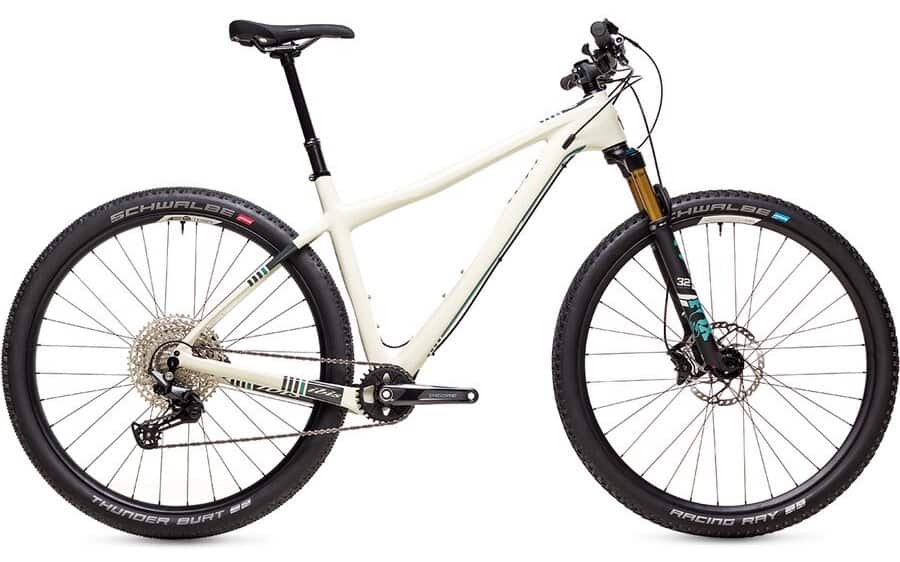 | Ibis DV9 Deore Factory | 9.7 | Check Price |
Best Value 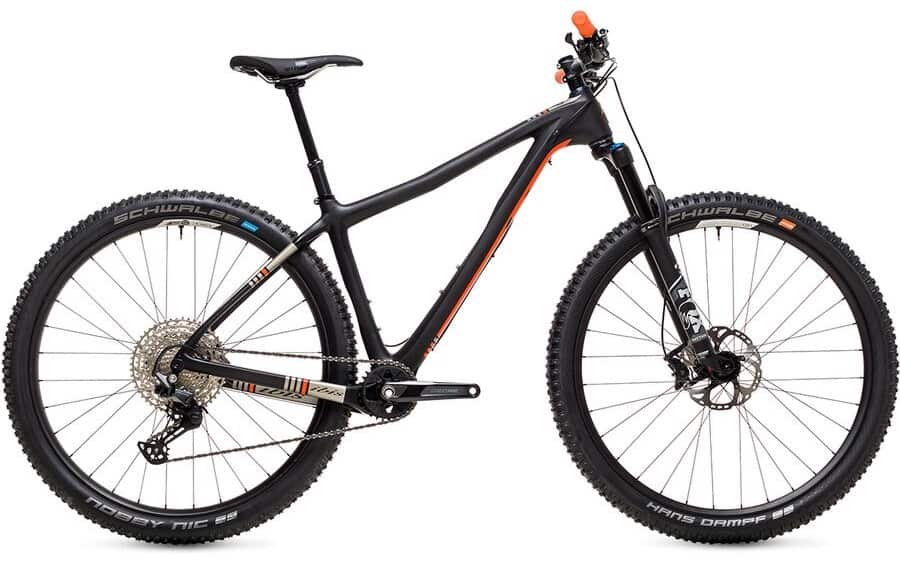 | Ibis DV9 Deore Mountain Bike | 9.5 | Check Price |
Low Price Favorite 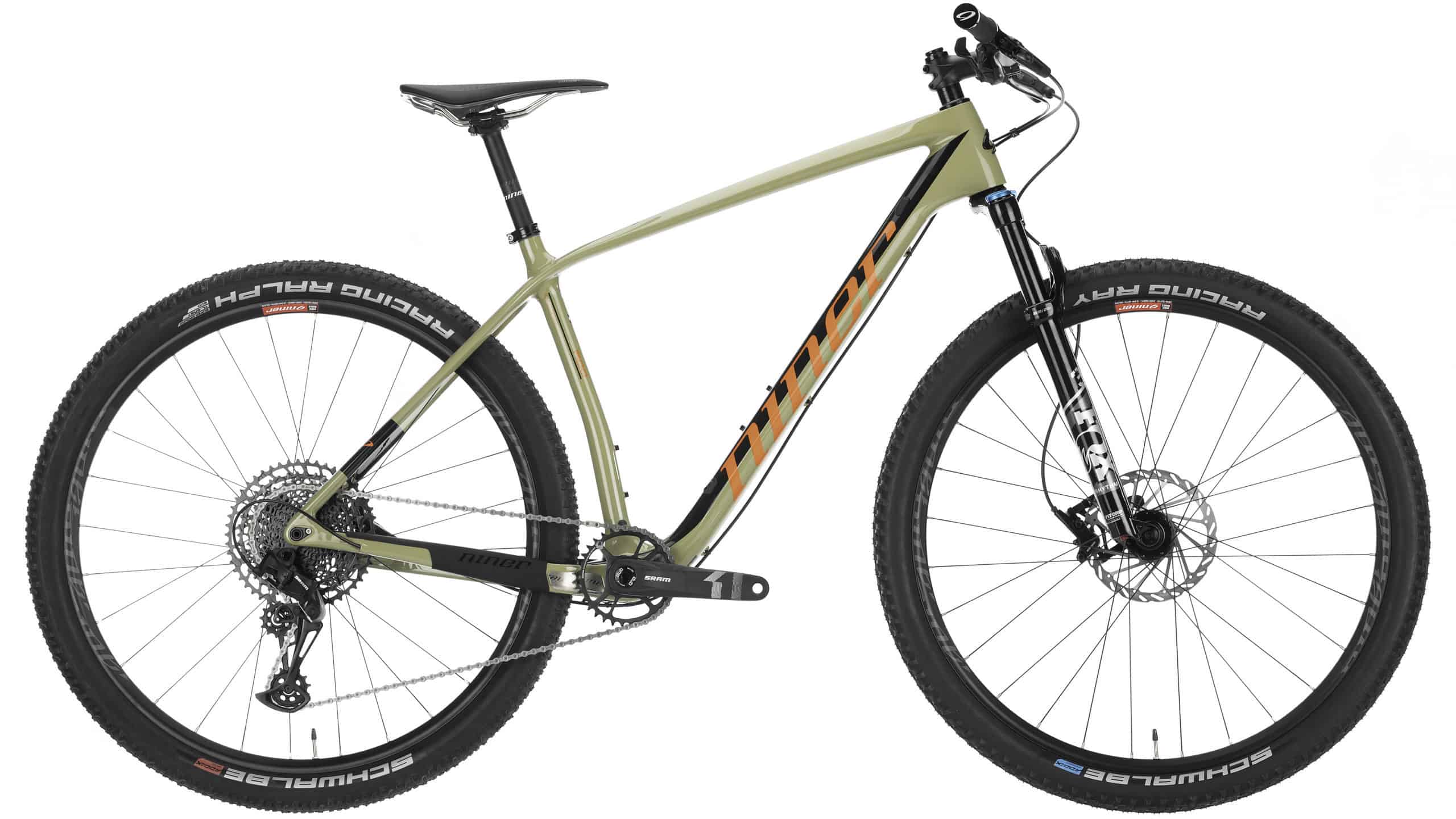 | Niner Air 9 RDO 2 | 9.1 | Check Price |
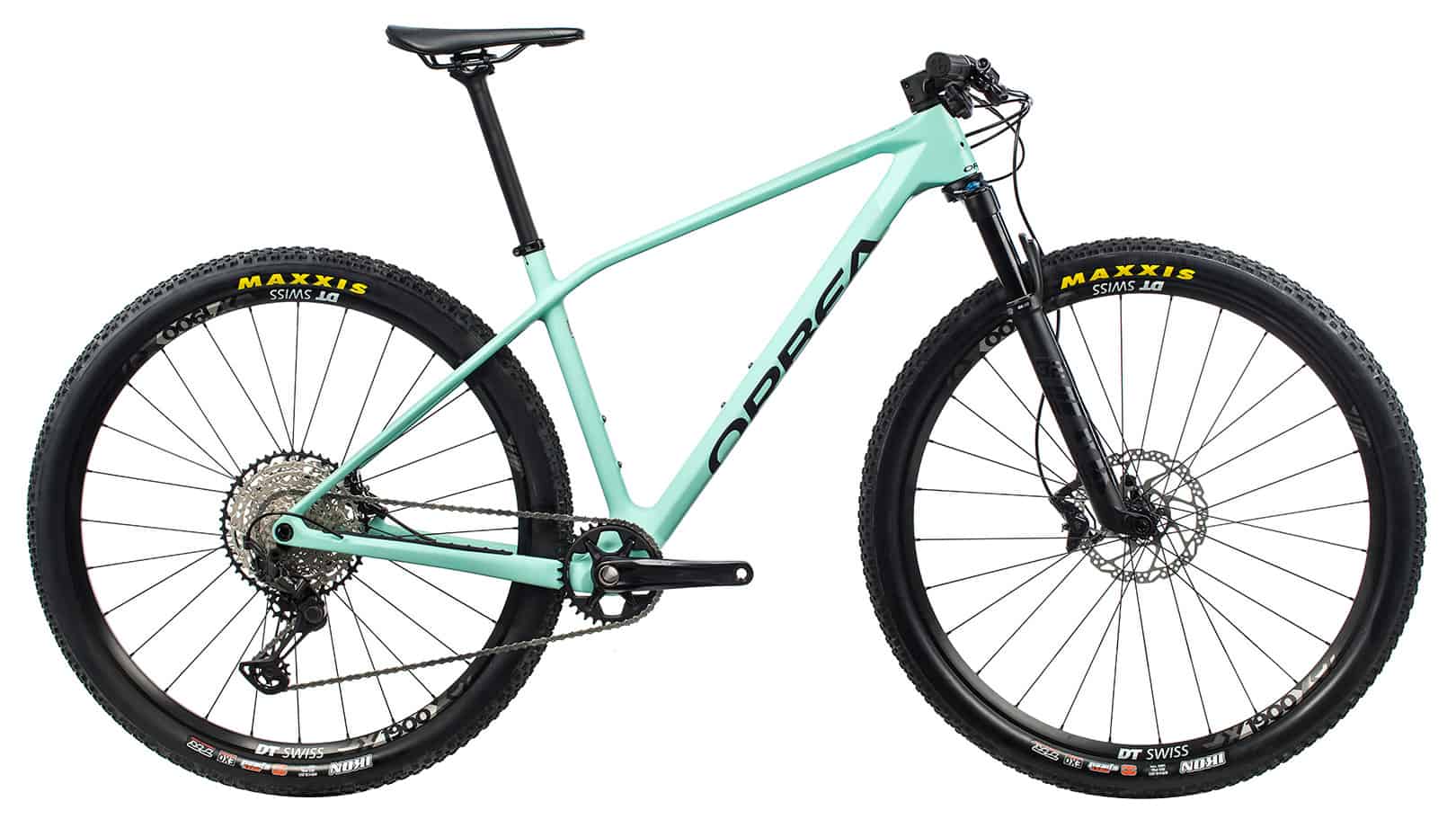 | Orbea Alma M25 Mountain Bike | 8.8 | Check Price |
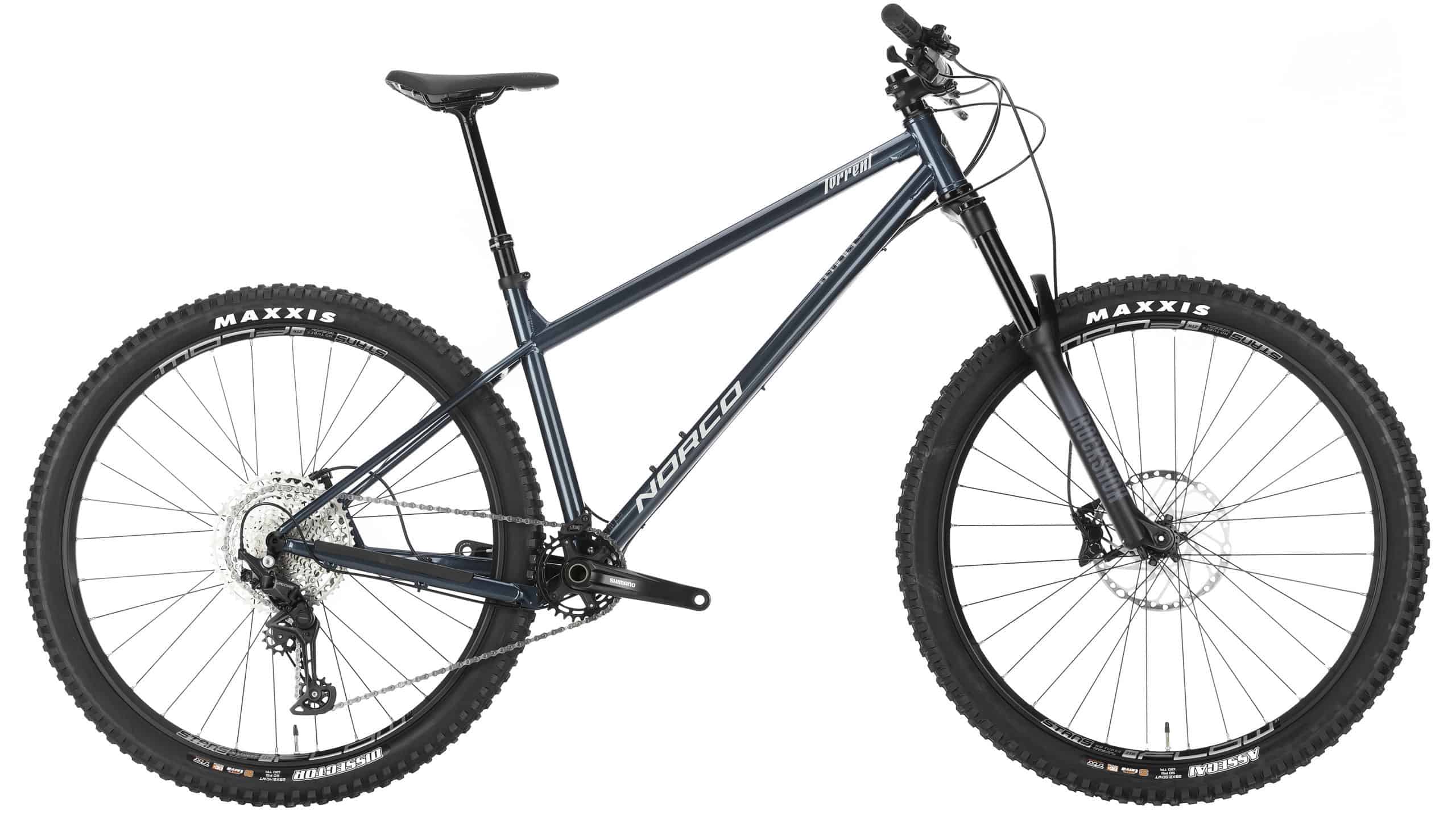 | Norco Torrent HT S2 | 8.6 | Check Price |
Ibis DV9 Deore Factory Complete Mountain Bike
- Frame: carbon fiber monocoque
- Wheel: 29″
- Fork: Fox Float Factory 32
- Fork Travel: 100mm
- Drivetrain: 1×12
- Sizes: L
- Weight: not specified
- Primary Use: Cross-Country
The Ibis DV9 Deore Factory Complete Mountain Bike is this years Editors Choice Award Winner. This particular build is setup to excel as a cross-country race fiend. It is laser focused on components that would be extremely light while providing great traction and feel making for a trail burner of a bike. If you can find the Factory Complete build in stock, grab it while you can.
Ibis DV9 Deore Mountain Bike
- Frame: Carbon Fiber
- Wheel: 29″
- Fork: Fox Float Rhythm 34 GRIP
- Fork Travel: 120mm
- Drivetrain: 1×12
- Sizes: S, M
- Weight: not specified
- Primary Use: Cross-Country, Trail
The Ibis DV9 Deore Mountain Bike is this years Best Value Award Winner. It shares some things with the Factory Build but downgraded ever so slightly to make it more affordable. It uses the awesome Deore drivetrain paired with an affordable but extremely capable Fox Float Rhythm 34 GRIP fork. Unlike the Factory Build, this bike is a real contender on trails. Personally I’m a value buyer and if I were looking to buy a hardtail mountain bike in the $3000 price range, with better trail capabilities, this is the bike I’d buy.
Niner Air 9 RDO 2-Star Build Mountain Bike
- Frame: RDO Carbon
- Wheel: 29″
- Fork: Fox 32 Float Rhythm GRIP EVO
- Fork Travel: 100mm
- Drivetrain: 1×12
- Sizes: XS, S, M, L, XL
- Weight: not specified
- Primary Use: XC, Trail
The Niner Air 9 RDO 2-Star Build Mountain Bike is our Low Price Favorite Award Winner this year. The frame is the highlight of this bike as it is just unbelievably responsive. What you get for the money is incredible and I highly recommend this bike.
Orbea Alma M25 Mountain Bike
- Frame: Alma Carbon OMR
- Wheel: 29″
- Fork: Fox 32 Float SC Performance Remote
- Fork Travel: 100mm
- Drivetrain: 1×12
- Sizes: S, M, L, XL
- Weight: Not specified
- Primary Use: XC, XC Race
The Orbea Alma M25 Mountain Bike is our #5 hardtail bike, but just because it’s in last place on our list doesn’t mean it’s not a good bike. In fact, it’s a tremendous bike that I like so much, it made our Top 5 list this year. With all new geometry for their hardtail, the bike is very quick and responsive making it a ton of fun to ride hard and fast. The real trick is finding one of them in stock ready to ship!
Norco Torrent HT S2 Mountain Bike
- Frame: Chromoly Steel
- Wheel: 29″
- Fork: RockShox 35 Gold RL
- Fork Travel: 150mm
- Drivetrain: 1×12
- Sizes: S, M, L, XL
- Weight: Not specified
- Primary Use: Trail, AM, Dirtjump
As the only bike on our list this year with Chromoly Steel, the Norco Torrent HT S2 is one of the best priced bikes we can recommend. It’s an extremely agile hardtail that has as one of its intended purposes to be used for dirtjump, which shows how versatile and fun this bike can be.
Previous Winners
Niner Rip 9 GDO GX
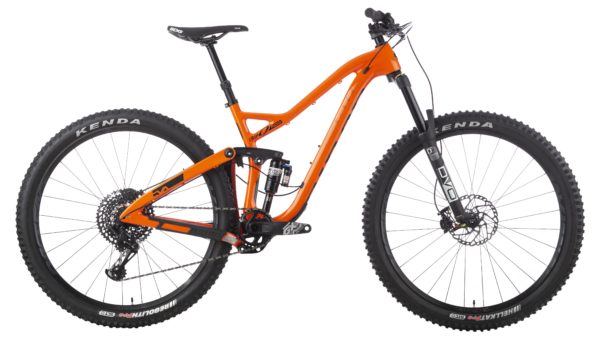
What Niner Says
The king of the mountain. For more than a decade, the RIP 9 RDO trail bike has ruled our off-road lineup. This flagship bike evolves again. Our do-it-all trail bike hits the sweet spot with 140mm of consistent, controlled CVA suspension, progressive and adjustable geometry, and increased frame stiffness. Plus it’s got more standover for 170mm dropper posts, longer reach, and a shorter head tube. More versatile and capable than ever before, reach for your RIP to tackle any trail.
What JensonUSA Says
This ready to RIP Niner Jenson USA Exclusive Build pairs the RIP with SRAM’s high performing and budget friendly NX/GX Eagle 12-speed drivetrain.
The NX trigger shifter throws down precise shifts along its 10-50t cassette giving you generous gear range for charging the downhills and spinning the climbs. The SRAM crankset boasts strength and stiffness that efficiently transfers your efforts into forward momentum.
When it comes time to slow things down, Shimano hydraulic disc brakes will do it with confidence and control.
The DVO Beryl Fork provides 160mm of plush travel, and adjustable low speed compression. All your riding buddies will drool over the DT-Swiss wheelset wrapped with Kenda rubber.
We round out this stellar build with a Spank cockpit and PNW dropper seat post with their renowned Loam Lever. So, whether you are on a weekend trail ride with your buds, or you want to test your limits at the next endurance race, this well-equipped Niner RIP is game.
Suitable For:
- Trail
- All Mountain
- Enduro
Key Features:
- Less Travel, More Bike: The new RIP 9 RDO sports 140mm of CVA suspension on a light, stiff, strong RDO carbon frame. With a 150mm travel FOX 36 fork up front, a 66-degree head tube angle, and a 75.8-degree seat tube angle, we’re hitting the sweet spot of efficiency and capability. We also built in more standover clearance and a shorter seat tube to accommodate 170mm dropper posts.
- Two Geometries: Thanks to the flip chip, two different geometries mean two bikes in one. The high mode geo is perfect for everyday trail riding. This bike launches uphill and over technical terrain, thanks to CVA suspension and the steep seat tube angle. When you’re all out of breath, turn around and point it down. Drop in with confidence thanks to the long reach, low BB, and slack, 66-degree head tube angle.
- CVA Suspension: Niner’s Constantly Varying Arc, or CVA™, is built to be supple yet stable, controlling unwanted suspension movement with calibrated anti-squat, yet remaining active while climbing and descending. Courtesy of a new higher overall leverage ratio, starting off at 3.0 and ending right around 2.3 for an average of 2.55, off the top it’s easier to set the shock in motion and overcome static friction. It’s also more supportive in the midstroke, holding the rider higher up in travel.
- RDO Carbon Fiber: We start with the best grades of raw carbon layered precisely according to the stress points on the frame structure. In construction, our process employs rigid internal molds and results in tighter, more consistent compaction of the carbon fabric. The result? Increased precision in wall thickness and reduced resin pooling in the final product. We can build more elaborate structures with better ride tuning, increased strength, outstanding durability, and less weight.
Sizes:
| SIZE | RIDER HEIGHT |
|---|---|
| Small | Under 5′ 9″ |
| Medium | 5′ 8″ – 6′ 0″ |
| Large | 5′ 11″ – 6′ 3″ |
| X-Large | 6′ 3″ – 6′ 7″ |
What We Like
For a $3000 bike, this is everything you could ask for. Starting with the frame by Niner, the Rip 9 is one of the best bike frames you can get in this price range. Carbon fiber, CVA suspension, full-sleeve cable guides, two-geometry setup is like getting two bikes in one. Being a USA company from Fort Collins, CO is also another plus for American craftsmanship.
This JensonUSA build is like taking the best parts to build a proven bike. No guessing on your part, let the experts at Jenson find the right balance of components to build a superior bike.
- DVO Beryl 29″ Fork with 160mm of travel smooths out the trail in front of you
- DT-Swiss M1900 Wheels are strong, durable, and tubeless ready
- SRAM NX/GX Eagle drivetrain delivers precise and dependable drivetrain performance with a ultra-wide range of gears
- PNW Rainer Dropper Seatpost paired with PNW’s Loam Lever
- CVA suspension eats the big stuff while maintaining efficient pedaling
- Rock Shox Monarch RC3 Shock perfectly complements the CVA suspension
Overall, this is our #1 pick. We really like custom builds by the experts at JensonUSA. They have terrific customer service and know what they’re doing!
Ibis Ripmo AF NX
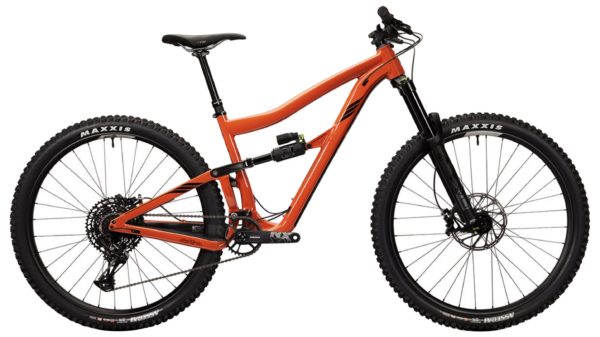
What Ibis Says
Big wheel, big travel speed demon.
With a sub six pound frame and 145mm of efficient dw-link rear wheel travel (160mm front), this is the most versatile bike we’ve ever built.
It also marks a dramatic shift in our approach to geometry. The reach is nearly an inch longer than the EWS Team winning HD4, with clearance for a 175mm dropper, and a pedal-friendly 76° seat tube angle. The end result is a bike that’s ready to rally, while still maintaining lively handling.
Ticking off the boxes, other features include 2.6” tire clearance, short chainstays, a threaded BB, trick internal cable routing and the ability to run both a piggyback reservoir shock and large water bottle.
Suitable For:
- Enduro
- All Mountain
- Trail
Key Features:
- Geometry: By making the seat tube angle a steep 76°, we’ve put more weight over the front tire. This keeps the front end from wandering or washing out. Moving the seat tube forward also required pushing the front end forward to keep the top tube numbers static, resulting in the longer reach. In addition to the steep seat tube, the Ripmo also uses a fork offset that is shorter than traditionally used. That makes a 65.9° head angle feel like 64.5° without increasing the wheelbase. You get the stability of a slack head angle without giving up your ability to go around tighter corners. The Ripmo geometry enables a new level of confidence and speed, bringing the stability of the EWS Team Championship winning HD4 to 29” wheels.
- Lifetime Bushings: If you ask an engineer, they’ll tell you that bushings are lower maintenance, stiffer, lighter, and more affordable than bearings. The key is to only use them where it makes sense. Bushings work best in applications with high loads and minimal rotation, two things ball bearings don’t like. That’s why suspension manufacturers use them for shock mounting hardware and why we’ve used them for the past five years on our Ripley, HD3, and HD4 clevis.
- Long Droppers: What’s better than a dropper post? A longer one. That’s why our frame is designed around a dropper that’s as long as possible. Riders on large and XL frames can use a 175mm post, and riders with longer inseams can get away with a 185mm or 200mm post. Folks on mediums can use 150 – 175mm and the small frames will accept 125 – 150mm. That low top tube means extra clearance, which gives you the flexibility to pick frame size based on reach, not standover height.
- Internal Cable Tunnels: While all our bikes have internally routed cables, the Ripmo is the first to feature carbon fiber tubes molded inside the frame. Just put the housing through and it pops out the other end, no need for swear words or a pickset.
Sizes:
| SIZE | RIDER HEIGHT |
|---|---|
| Small | 5′ 0″ – 5′ 5″ |
| Medium | 5′ 4″ – 5′ 9″ |
| Large | 5′ 9″ – 6′ 2″ |
| X-Large | 6′ 0″ – 6′ 6″ |
What We Like
Ibis was founded in 1981 at Mendocino, California and is now building great stuff out of Santa Cruz, CA. One of the major things to note that it’s slightly heavier than most XC bikes, but it rides way faster. It bombs down descents and the DVO suspension is out of this world. This carbon Ripmo is known as being one of the best all-around 29ers you can buy today.
Santa Cruz Hightower
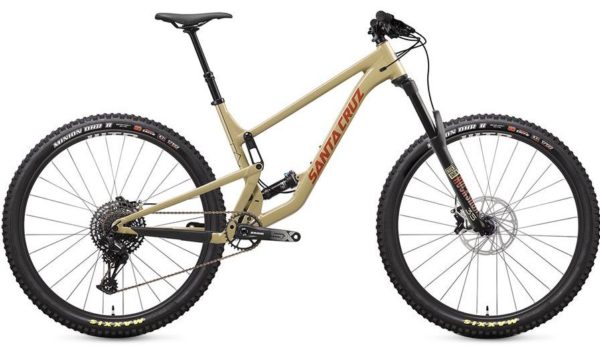
What Santa Cruz Says
If ever a bike resembled your most cherished mix tape compilation, the Hightower is it. Featuring our lower-link mounted shock design, updated, adjustable geometry, this “Engineering Best Of…” assembles some of our biggest design pleasers into one belter of a road-trip companion.
The Hightower has been a does-it-all-well trail bike since its inception. More maneuverable than its longer-travel sibling, the Megatower, and more at home in the steep-and-chunky than its snappy cousin Tallboy, Hightower excels when the route covers ‘all points in between,’ and descents come courtesy of some big-ass climbs. The VPP suspension’s lower-link-mounted shock creates a nearly linear leverage curve, meaning it mops up bumps of all sizes and maintains the kind of progressivity normally reserved for our V10 DH bike!
Suitable For:
- Enduro
- Trail
Key Features:
- Time Evolved Suspension: 140mm of rear travel complemented by a 150mm front end gives Hightower just a bit more front and rear travel over the first generation model. Combined with a slacker 65-degree head tube angle, the Hightower still sits squarely in the Goldilocks zone, but with a touch more “Oh sh*t get me out of here” capability when the porridge gets too hot!
- The Flip Chip: The Hightower also has a bonus disc to heighten the experience—the flip chip. In the High setting, the BB height is a little higher for those tricky tech trails and/or when Plus sized tires are required. In the Low position the shock rate is more progressive, to provide additional bottom-out resistance. Whatever mood you’re in, the tone of the Hightower can be adapted to meet your individual taste.
- Lifetime Warranty: The lifetime frame warranty, lifetime pivot bearing replacement policy, and lifetime guarantee on the optional Reserve carbon wheels assures you that the Hightower will keep delivering the hits for years to come.
Sizes:
| SIZE | STANDOVER |
|---|---|
| Small | 27.5″ |
| Medium | 28.0″ |
| Large | 28.0″ |
| X-Large | 28.0″ |
| XX-Large | 27.7″ |
What We Like
If you love mountain biking, then you are probably familiar with this California-based brand. Santa Cruz Bicycles is one of the top manufacturers of high-quality mountain bikes, and the Hightower is one of the most popular models that they offer.
Technically speaking, this ride is built more for trail riding than cross-country, but you can use it for both. The durability and reliability of this model make it versatile and allows you to take it on all of your biking journeys. Essentially, if you love to ride trails but you also dabble in XC, you don’t have to buy two bikes to do it.
What makes the Hightower such an effective mountain bike is the frame. It’s built to put you in a better riding position so that you can get more power and control with each pedal pump. It comes with full VPP suspension (proprietary for Santa Cruz), which is designed to help you be fast and aggressive on the trail.
What we also like about this bike is the flip chip. It has a high and low setting, allowing you to dial-in your bike for the type of riding you’re going to do that day.
NINER JET 9
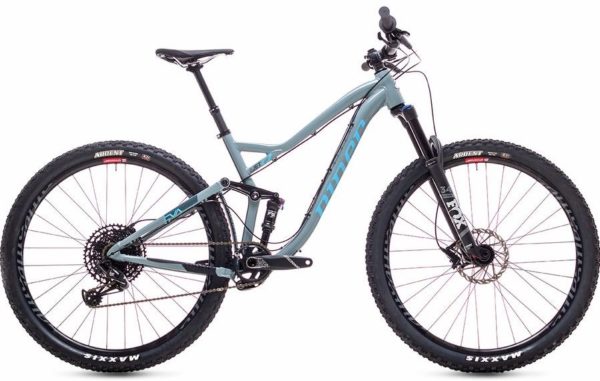
What Niner Says
Cross-country efficiency, trail bike versatility. With 120mm of trail-tuned CVA suspension, you’re cleared for takeoff.
Looking for a bike that ratchets up the fun factor but doesn’t bite back when there’s work to be done? Our playful JET 9 RDO is the ticket. With Niner’s [R]evolution geometry and 120mm of suspension travel, you’ll float up technical climbs, blast downhills, and fly smoothly over everything else.
When mountain bikers tell us they want one bike that does everything well, we steer them toward the JET 9 RDO. It’s our most popular mountain bike and it consistently earns accolades from media reviewers, everyday riders, and Niner athletes. By blending the best attributes of a dedicated cross-country bike with the suspension and geometry characteristics of a trail bike, we’ve made the most versatile bike we could imagine.
The JET 9 RDO is made to accept your choice of 29-er and 27.5-Plus wheels and tires. The frame geometry is made to manage both technical downhills and challenging climbs. And the suspension system is designed for a blend of efficiency and performance.
Suitable For:
- Trail
Key Features:
- [R]Evolution Geometry: Niner’s [R]Evolution geometry translates to modern trail manners when you need them most. The roomy cockpit has a comfortable reach for short stem lengths, giving you quick handling and plenty of maneuverability to blast through chunder and slash corners. And of course, the slack, 67-degree front end and long wheelbase contribute stability and self-confidence when you’re dropping into the steepest lines.
- CVA Suspension: In a nutshell, the CVA system controls unwanted suspension movement with calibrated anti-squat provided by chain force, rather than relying on rear shock compression damping or manual lockouts. At the same time, CVA keeps the suspension active while climbing and descending, thanks to careful pivot placement which effectively tunes the amount of bump input required to overcome the anti-squat.
- Anti-Squat: Niner’s CVA axle path (and hence chain growth) is designed to maximize anti-squat right at the sag point, or within the first 25-30% of suspension travel. Chain tension from pedaling force helps to hold the bike up in its travel, right at the sag point, and prevents it from squatting or bobbing under pedaling load.
- Patented and Proven: Niner’s CVA suspension system was designed in-house, has been used on Niner bikes since 2008, and was granted a US Patent in May 2011. The system was awarded a Eurobike Design and Innovation Award in 2012 and has earned rave reviews from riders, product testers, and athletes around the world.
Sizes:
| SIZE | STANDOVER |
|---|---|
| X-Small | 26.4″ |
| Small | 27.0″ |
| Medium | 28.7″ |
| Large | 29.8″ |
| X-Large | 31.1″ |
What We Like
When picking out the best mountain bike, you have to pay attention to both the kind of riding you plan on doing, as well as what you are best at on the trail. For example, if you can muscle your way through uphill battles, then you might prefer a bike that makes downhill much easier for you. Conversely, you may like having the extra power for inclines, even though you can master them no matter what.
With the Niner Jet 9, you get a trail bike that’s well suited for both up and downhill traveling. It offers the best of both worlds, thanks to a rugged and responsive suspension system that gives you control and performance where and when you need it most.
Yes, this is technically another trail bike, but it can work for casual XC riders as well. You will have to contend with a heavier frame (particularly with the 29-inch wheels), but it will offer a lot of benefits when you are traveling over that rough terrain. Also, if your route does have any hills, then you will love how the Jet 9 handles them with aplomb.
Kona Process 153 DL
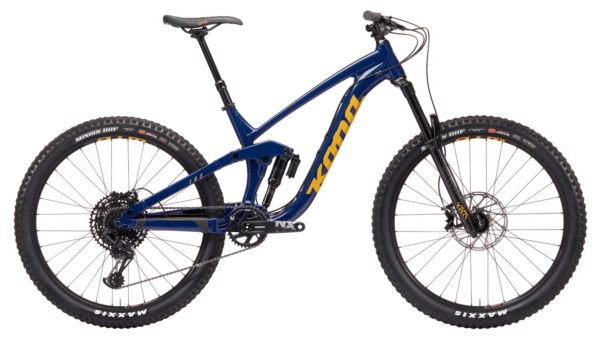
What Kona Says
The go-anywhere, do-anything workhorse.
The Process has spent the last six years making a name for itself atop the best-of enduro bike lists. It leads the charge in enduro design and technology and with the likes of Kona’s Enduro World Series Team riders Miranda Miller, Connor Fearon and Rhys Verner racing aboard the Process, it’s proven on the world’s trickiest tracks.
It’s also safe to say that not only does it climb exceptionally well, but it’s a beast on the descents, too.
Suitable For:
- Enduro
- All Mountain
Key Features:
- Beamer Independent Suspension Design: Built to be off-the-top progressive, Beamer Independent Suspension helps the bike stay higher in the travel and recover from hits quicker.
- Elite-Level Components: A Rock Shox Yari fork and SuperDeluxe rear shock provide a supple and smooth ride, the SRAM GX/NX Eagle 12-speed drivetrain provides all the gears you need to make it up the steepest climbs, and SRAM Guide R brakes provide incredible stopping power when descending steep chutes.
Sizes:
| SIZE | STANDOVER |
|---|---|
| Medium | 27.8″ |
| Large | 28.5″ |
| X-Large | 29.1″ |
What We Like
This bike is playful and incredibly nimble to ride while being responsive and stable. It’s an all-around great mountain bike that can go anywhere you want to go.
Final Verdict
2021 has been a challenging year for many reasons. For those of us that love mountain biking and are shopping for a new bike, supply and stock have been real issues. You may not be able to get what you’ve been waiting patiently to buy. But, we’ve been able to find some great bikes, in stock, that will up your MTB game.
For a full-suspension bike, I like the value the Occam H30 2021 model provides. I like to get the best bang for my buck and this one is it in my opinion.
If you’re in the market for a hardtail bike, the Ibis DV9 Deore Mountain Bike and the low-price favorite Niner Air 9 RDO 2 are my 2 favorites. I really like the Niner brand so this would be a really tough decision for me. In the end though, if I had a few more bucks, I’d get the Ibis DV9 Deore Mountain Bike.
